Just started an ecommerce business but have no idea how to get traffic or sales? You’re in the right place.
To find the marketing strategies that are working in ecommerce today, I decided to do something different.
- I polled marketing experts in three Facebook groups, including our customers-only group, Ahrefs Insider.
- I jumped on a call with my friend, Babak Azad, Chief Marketing Officer at GoodRx, and a consultant to 8‑figure ecommerce businesses like Kettle & Fire and ButcherBox.
I’ll share my findings in a moment. But first, a quick definition.
Ecommerce marketing is the process of using marketing tactics to drive awareness and acquire customers for an online store.
These tactics are typically online (digital marketing), but they can also include offline strategies such as running print advertising, buying ad space on billboards, speaking at events, etc.
Now, let’s dive into the strategies.
43% of ecommerce traffic comes from organic Google searches.
Translation: if you’re not showing up on Google for your target keywords, you’re missing out on a lot of traffic—and possibly sales.
Enter SEO.
SEO is the process of optimizing the pages on your ecommerce store to rank in Google and other search engines.
An example of ecommerce product pages ranking on Google.
By focusing purely on SEO, Revzilla grew to over $75 million in sales and their website now gets more than 1.7 million organic search visits per month.
As you can see, organic search is an essential channel for ecommerce stores.
How do you get started?
Focus on ranking individual product and category pages.
Here’s a simplified process:
- Do keyword research. Brainstorm a few words or phrases that one might type in Google to find your product. Paste them into Ahrefs’ Keywords Explorer and check their search volume. Note down any relevant and popular keywords.
- Identify search intent. Make sure that people searching for this keyword are in buying mode. To do that, search Google for the keyword and check that it’s mostly product or category pages ranking in the top 10, not blog posts.
- On-page optimization. Create an appropriate page that matches search intent, and optimize your title tag, description, H1, URL, and product descriptions for your target keyword.
- Build links. Link building for product or category pages is notoriously tricky. But you can use tactics like the Middleman Method to make this easier.
Read our full guide to ecommerce SEO to learn more about how to do this.
Content marketing is the process of creating online content to teach potential customers how to solve the problems they’re facing, and how your product can help with that.
For example, Beardbrand teaches bearded gentlemen how to shape their beard, and promotes their products in the process.

Here are two ways to get started with content marketing.
A. Target topics with search traffic potential
One of the biggest mistakes that businesses make when blogging is writing me-focused content.
Unless you’re a celebrity with a large following, that strategy won’t work. Sure, you might get a small spike of traffic as you promote it to your existing audience. But soon after, your traffic will disappear.
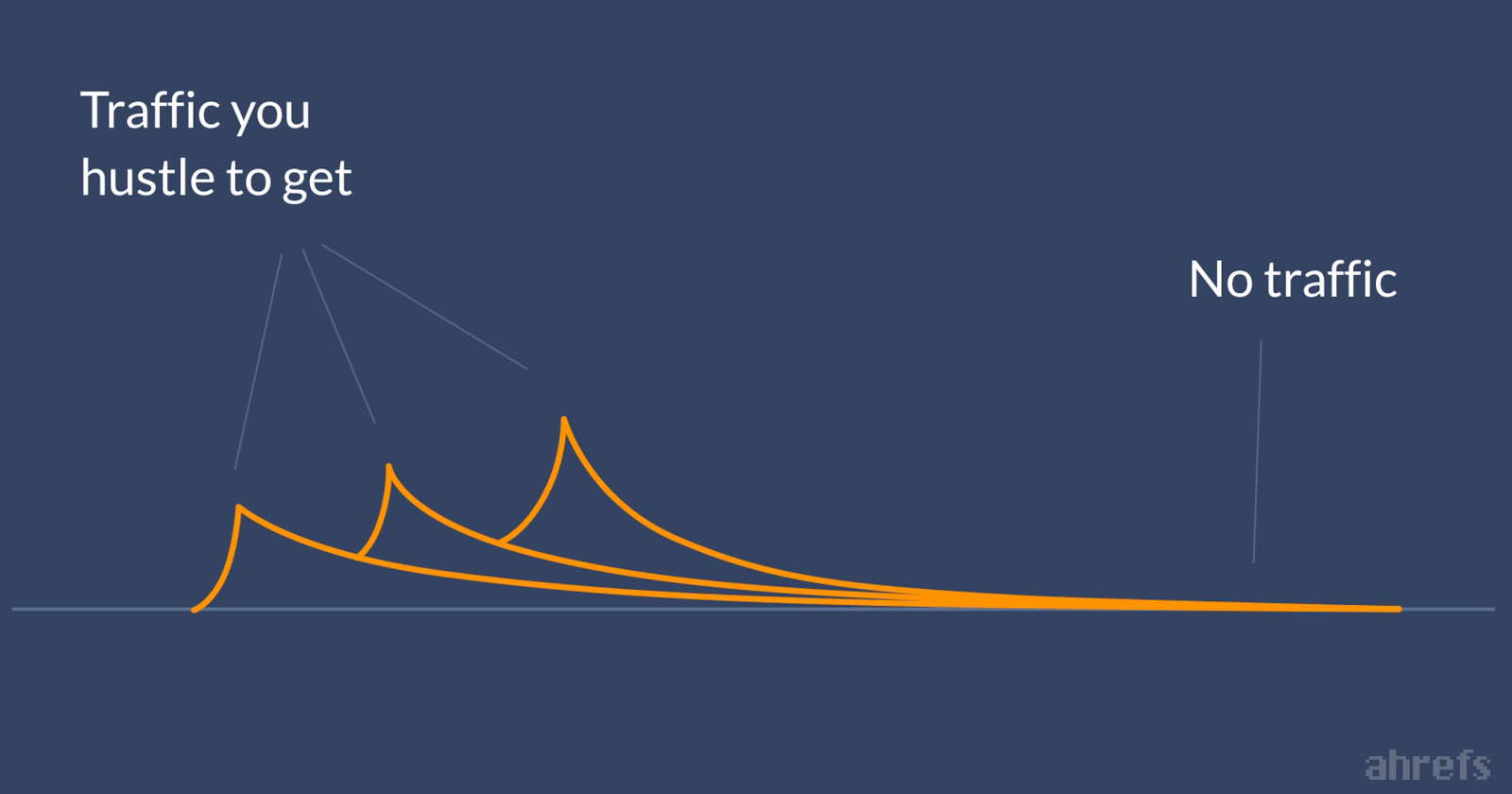
If you want your blog to grow, you need to write about topics that people are searching for. For as long as you rank highly in Google, you’ll be able to generate passive, organic traffic to your site.
How do you find such topics?
Paste a few ideas into a free keyword tool like Google Keyword Planner. Or, to get a broader set of keyword ideas, use a tool like Ahrefs’ Keywords Explorer.

Because these tools often uncover a lot of keywords, you’ll find that it’s impossible to target them all. As Nat Eliason, Founder of Cup and Leaf, explains, filters are the solution.
We scored all the keywords that were showing up in our searches based on how many people are looking for it, how difficult it would be to rank for it and whether it is a search that will lead to a purchase.
The first two steps can be done easily in Ahrefs’ Keywords Explorer by adding two filters:
- Search volume: the overall search demand for the keyword, or how many times it’s searched on Google each month in a specific country;
- Keyword Difficulty: the ranking difficulty of a keyword, represented as a numerical value between zero and a hundred.

This gives you a manageable list of low-competition topics with decent search volume.
IMPORTANT
Keyword Difficulty (KD) only gives a rough sense of difficulty. You should always analyze the search results manually to judge real-world difficulty and search intent before targeting a keyword.
Next, prioritize the list by focusing on topics with high business value. Nat found that the highest-converting topics for him had modifiers like “best” (e.g., best green tea.) You can easily filter for such topics with the “Include” feature:
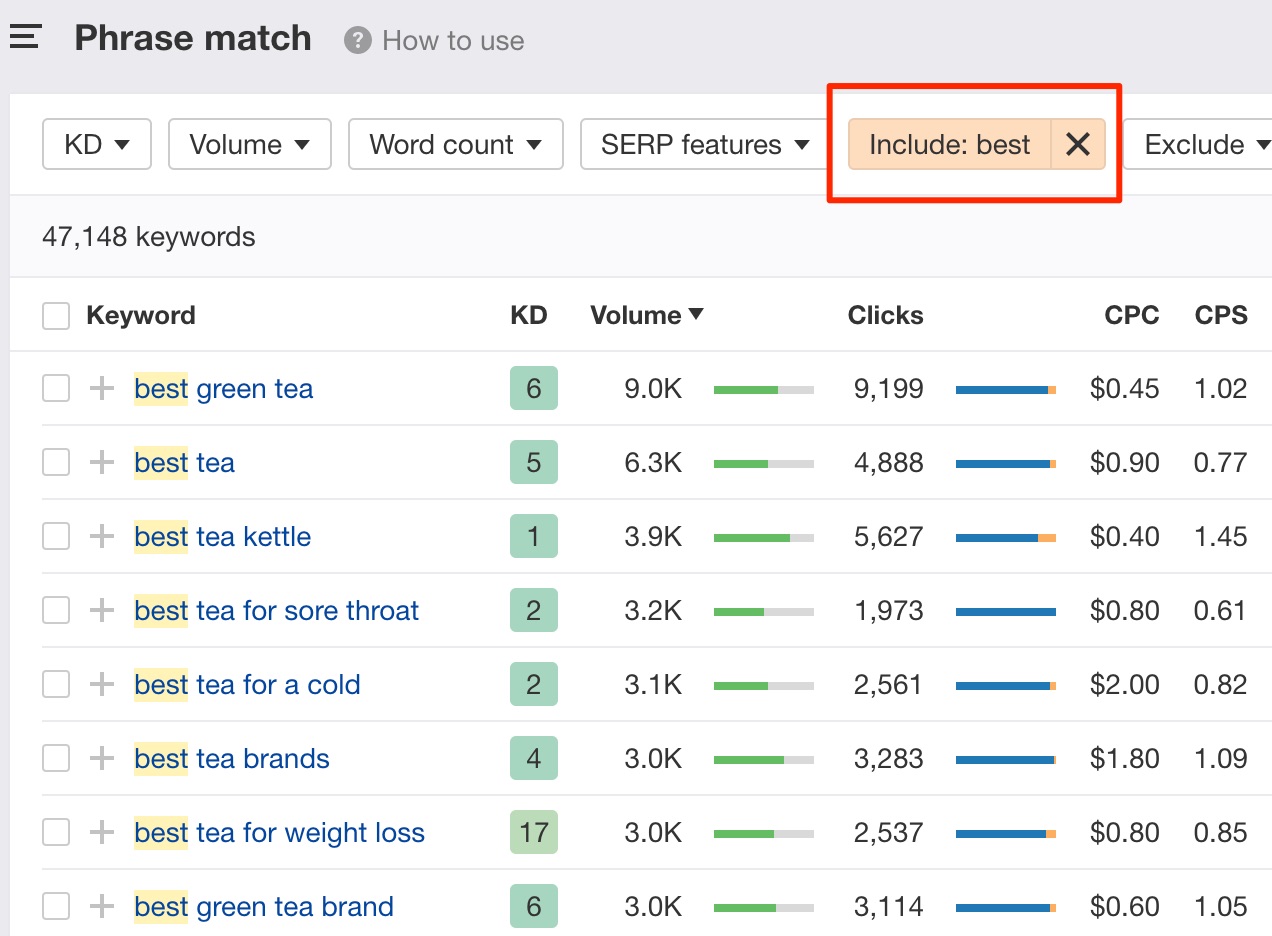
From there, create a remarkable piece of content that deserves to rank.
Learn more about creating great content in our guide to writing a blog post that ranks.
B. Rank videos on YouTube
At 3.2 million subscribers, Luxy Hair is killing it on YouTube.

Not only have they built a community of hair fanatics, but they’re also ranking for plenty of relevant keywords.
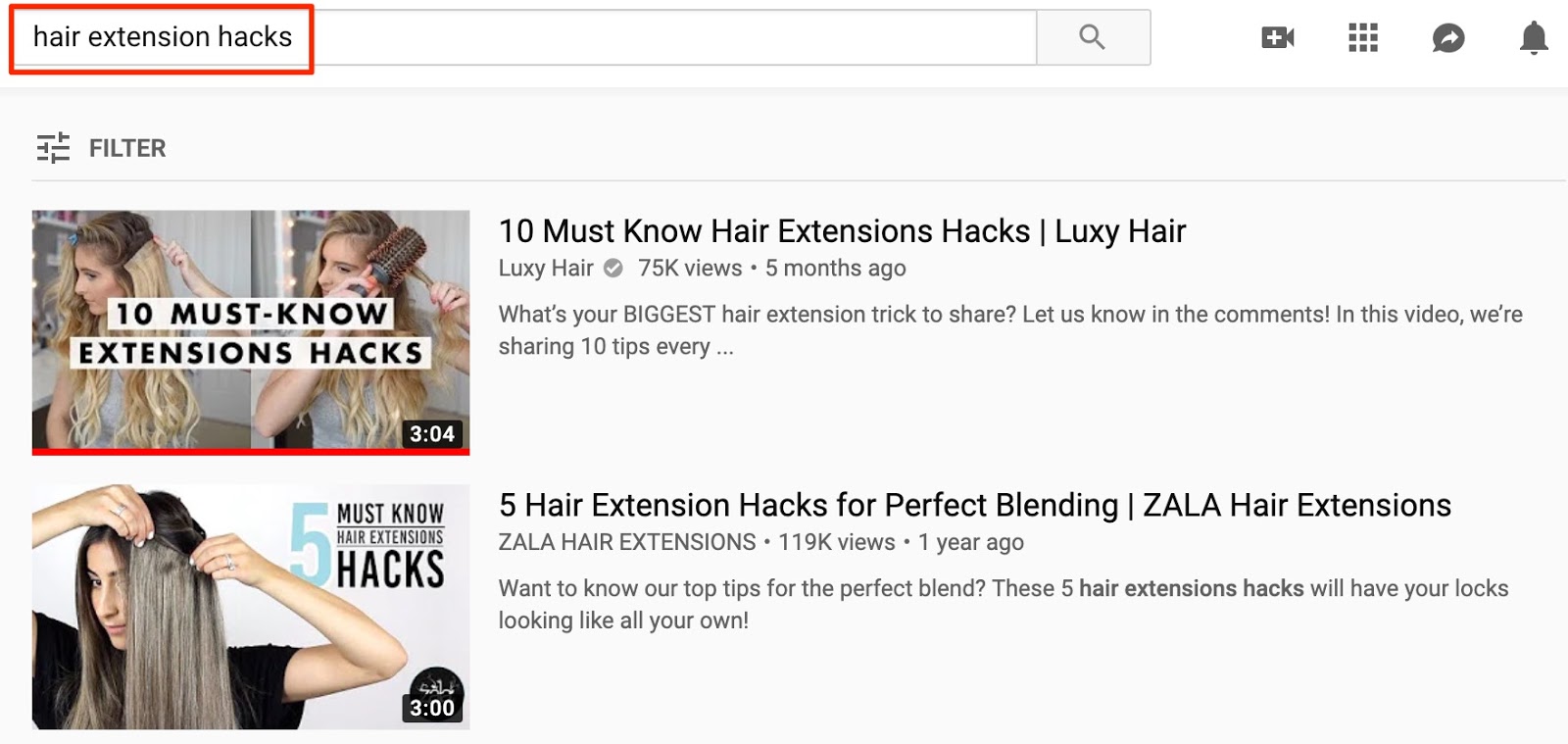
Whenever someone looks for hair-related videos, Luxy Hair is there. And this allows them to drive awareness of their products and demonstrate them in action. They can also point subscribers towards their online store to buy products.
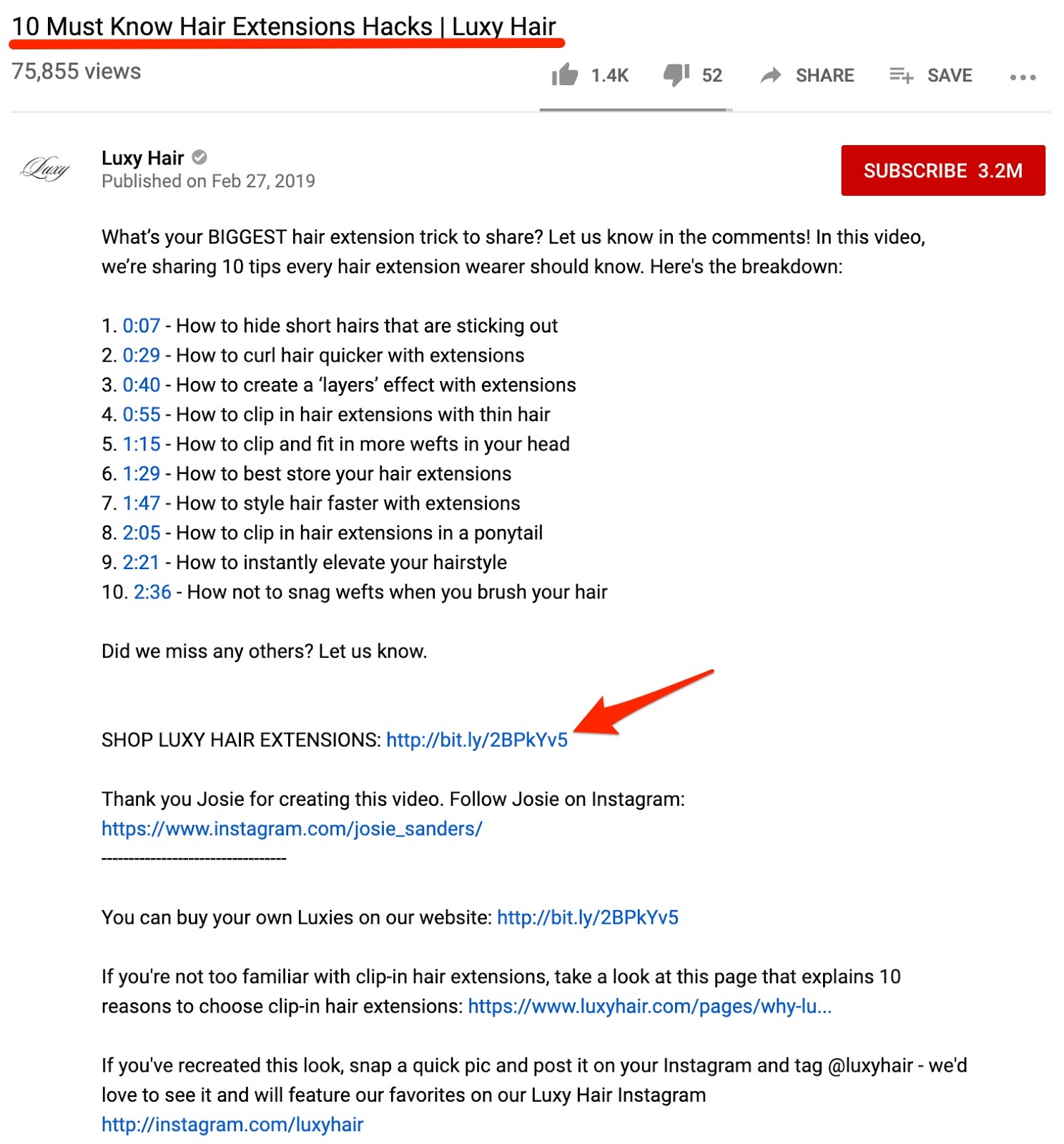
On YouTube, everyone has an opportunity to rank. Since YouTube wants viewers to stay on the platform so they can make more ad dollars, they’ll reward anyone with visibility if they can make entertaining and engaging videos.
Like with blogging, it’s best to target keywords with search volume. To find these, paste a broad keyword into our YouTube keyword tool, and go to the Questions report.

For best results on YouTube, you can follow this 4‑part formula by Alex Ikonn, the Founder of Luxy Hair:
- Quality. Have decent audio and video quality. It need not be super high-end, but you should make sure people can watch your videos without tearing their hair out.
- Value. Teach the viewer something or solve the problem they came for. Make it genuinely helpful, and not just a pitchfest.
- Consistency. Luxy Hair puts out a video a week, and have been doing so for the past nine years. Let your audience know you’re here for the long-term. Find a schedule and stick to it.
- Authenticity. Be authentic. If you have no experience with something, don’t fake it. Mimi, the mainstay in their videos, isn’t a hair-stylist. She doesn’t hide that fact and regularly tells viewers that she’s just a regular person who’s learning more about hair.
You can also learn how to edit your videos for higher engagement with this video:
Want to learn more about YouTube SEO? Read our full guide to ranking videos on YouTube.
On average, for every $1 spent, email generates a $38 return. That is an astounding 3,800% ROI, making it one of the best marketing channels available.
In fact, KarmaLoops—once a 9‑figure streetwear brand—was pulled out of bankruptcy thanks to email marketing. Gnarbox, a backup device for your camera, raised over $900,000 in Kickstarter funding, thanks to their email list of 20,000 people.

A lot of people underestimate how important and powerful email marketing is.
To start, you’ll have to build an email list. The first step is to generate traffic to your website. That’s relatively simple—any strategy you use in this post should work (Or you can also check out this list of strategies.)
The next step is convincing them to sign up for your list. Doing this well is a matter of providing value to your visitors. Generally, people do this by offering exclusive deals or a free piece of content (e.g., an eBook.)
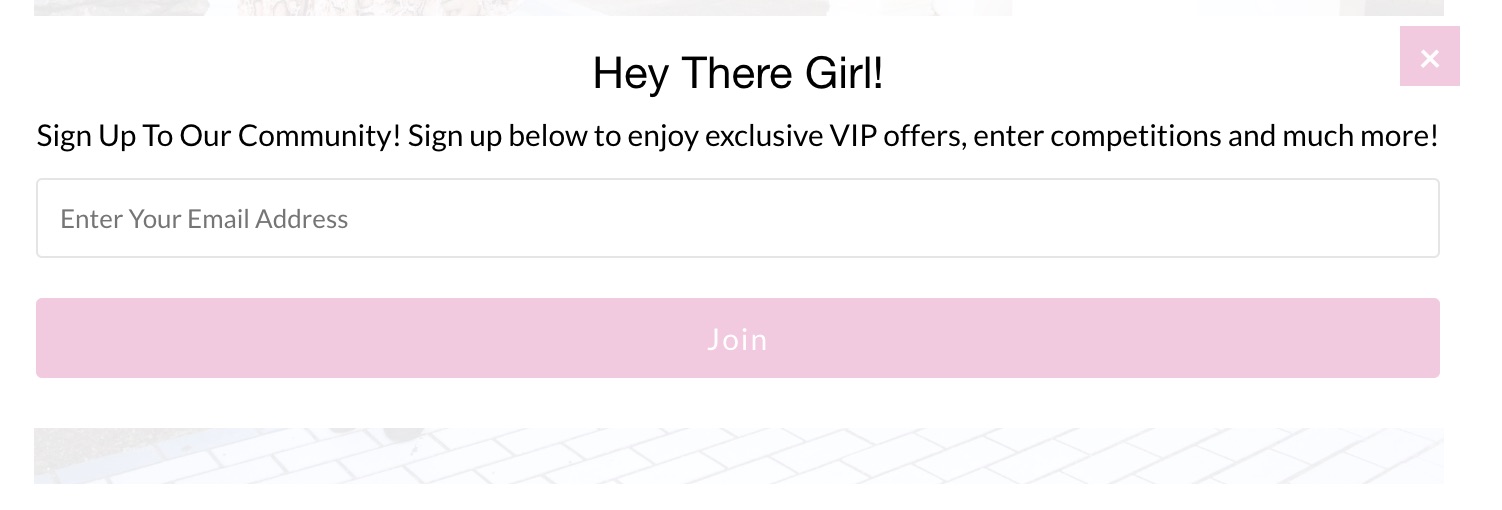
Some ecommerce stores like to offer a discount as a thank-you for signing up.

Opt-in example from zalora.com
Once you have people signing up to your list, create an onboarding sequence to keep them engaged. That might be a welcome email series introducing yourself, your company, and pointing them to a few informational resources you have. Or you could direct them to your product catalog.
There’s an infinite number of ways you can set this up, so I encourage you to read this post on the types of campaigns you can try.
And don’t forget: you can also send abandoned cart emails. These are emails you send after shoppers add products to their carts, but exit before making payment.
About 70% of shoppers abandon their carts, and these emails can help to nudge them towards making a purchase.
Learn how to write abandoned cart emails that work in this guide.
Remember: in the end, the purpose of email marketing is to build a good relationship with your customers. When your customers are engaged, you can maintain top-of-mind awareness and encourage them to visit your store again and again—generating more sales for you.
So, don’t just send a couple of onboarding emails and leave it at that. Figure out ways to continually add value and engage with them.
This could mean sending them your latest blog post, telling them about new products, offering discounts, celebrating with them, etc.
You could also tie relevant events and occasions (e.g., end of summer, back to school, etc.) in with your products:
According to eMarketer, social ad spending for 2019 is estimated to be $37 billion. And 84% of that goes to Facebook (which includes Instagram and related properties).
The reason so many marketing dollars are invested here is that the targeting options for social ads are insanely powerful.
For example, on Facebook, you can narrow your ad targeting by demographics, interests, pages that people have liked, and much more.
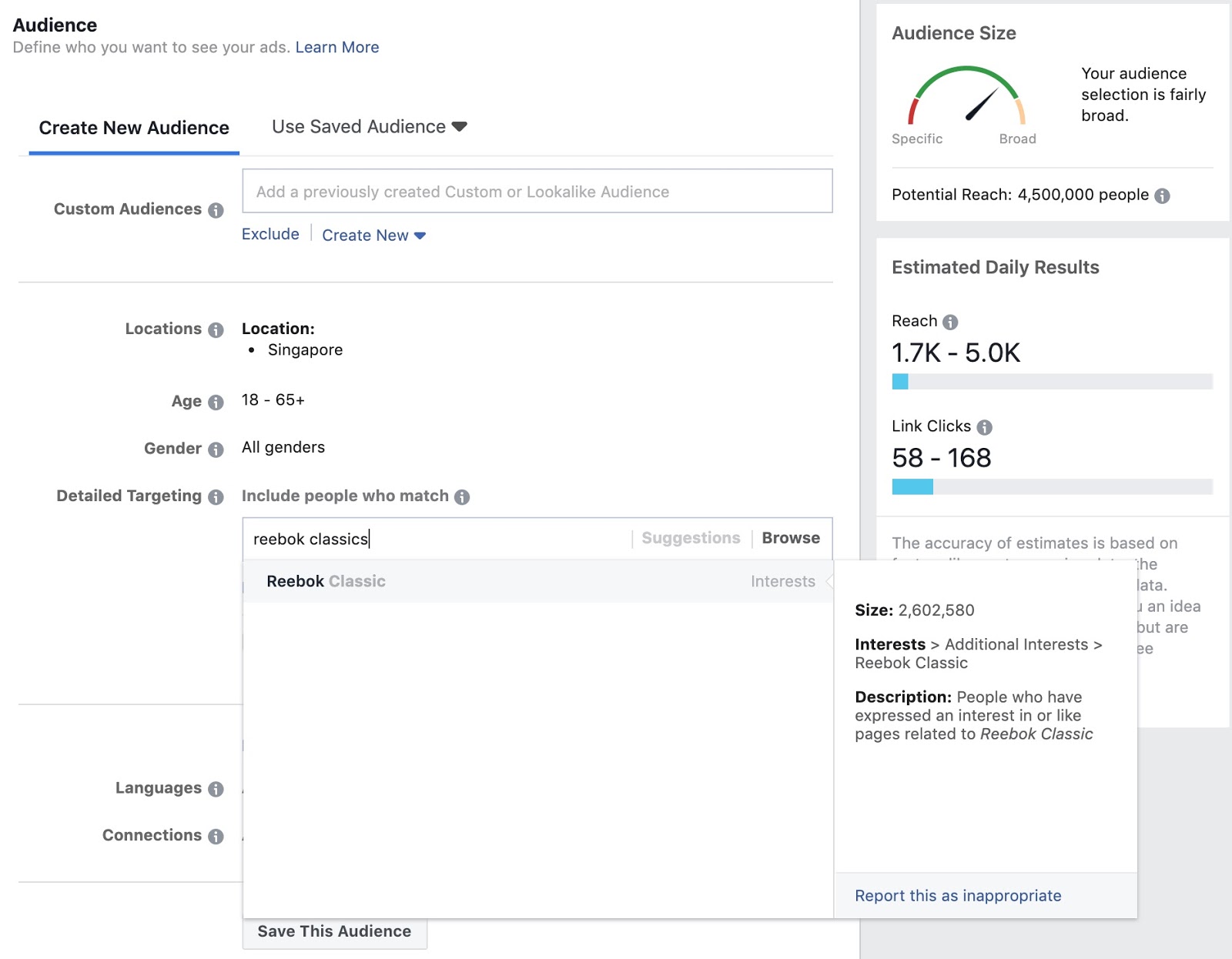
Better targeting = cheaper clicks.
Social ads are also incredibly useful if you run an ecommerce store that sells niche products, like CriticalPass, which sells flashcards for law school students.
It would have been hard for them to target this specific group of people in the past, but with social ads, they can reach them easily.
But as a new ecommerce store, you might think you don’t have the budget to run ads. However, that’s not necessarily true.
The key is to focus on measuring your return on ad spend (ROAS). When it’s positive, that means your ads are generating sales. And, assuming your conversion value takes into account all costs, you’re making money.
Now, there are plenty of social ads to choose from, and we could spend all day talking about them. Instead, let’s talk about two of the most popular.
A. Facebook ads
Ecommerce stores like MVMT (pronounced “movement”) have grown to revenues of $100 million, with Facebook ads driving a big part of their sales.

Facebook ads are what my friend Babak calls, “proven, repeatable, scalable” channels. MVMT isn’t the only store that’s had success—Babak has seen plenty.
Teaching you how to run profitable Facebook ads is beyond the scope of this post, so I’ll leave you with a few resources that’ll help you get started:
B. Instagram ads
Part of the same ads ecosystem, you can also consider running Instagram ads.
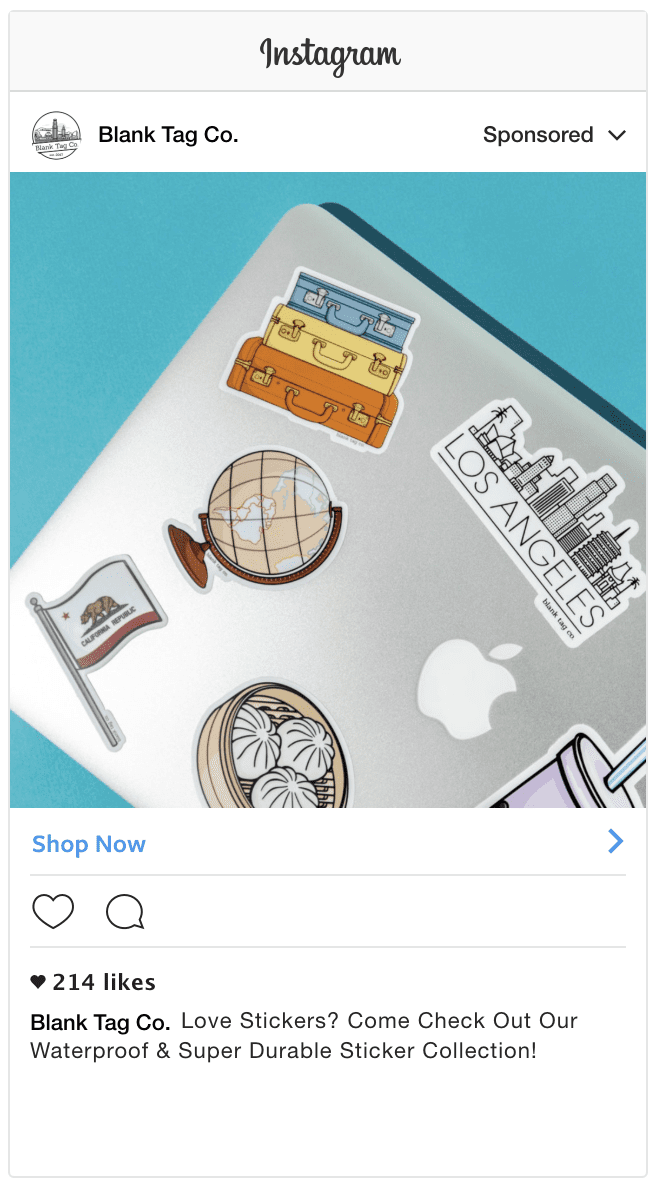
Source: https://buffer.com/resources/instagram-ads-blank-tag
The key to making this successful is constant experimentation. Keep a close eye on your ROAS, and run various tests to see which performs best for your store.
Remi, the founder of Blank Tag & Co., recommends experimenting with these things:
- Videos vs. images;
- Ad placements (feed or stories);
- Copy (he found that opening ads with a question worked well);
- Location (Remi found targeting particular products to certain regions worked better);
- Audience (Alternating between lookalike audiences and manual targeting helps Blank Tag avoid audience fatigue.)
What about organic social media?
Even with organic social media, you’ll have to spend money. Successful accounts like SkinnyMe have paid influencers to endorse their brand and grow their following.
If you have to spend money, ads are often a better way to measure and scale your results.
That’s not to say that organic social media doesn’t work. It does. But it’ll take time. If you’re looking for results fast, then ads are a better option.
However, there is a twist. While you generally do not need a strong Facebook page to run ads successfully, the opposite is true for Instagram.
Or at least that’s what Grace McLaughlin, Marketing Manager at Blenders Eyewear, says.
If you let the organic side slip, then you’re just wasting advertising dollars. A lot of users are going to click through on your ad to browse your ‘grid’ as a secondary step before clicking off the app to your website.
So, if you’re running Instagram ads, make sure you also create great content for your feed.
With Google Ads, you can pay to appear in the search results.

This is useful, even if you’re investing in SEO. Since SEO will take time to work, you can bid on your target keywords first and start getting traffic.
There are three types of ads that you can test.
- Search ads;
- Display retargeting;
- Google Shopping.
A. Search ads
These are ads that appear in search results for particular queries.
The key to making this work well is to figure out what keywords you should be targeting.
Of course, there are plenty of strategies for doing this online, but here’s one that can help you get started right away:
Pursue keywords your competitors are bidding on.
You see, if your competitors are paying for traffic from particular keywords, it may indicate that they’re profitable for them. And that means these keywords could be profitable for you too.
To do this, paste a competing domain into Ahrefs’ Site Explorer and go to the “PPC keywords” report. Remove branded queries by entering their brand in the “Exclude” box.
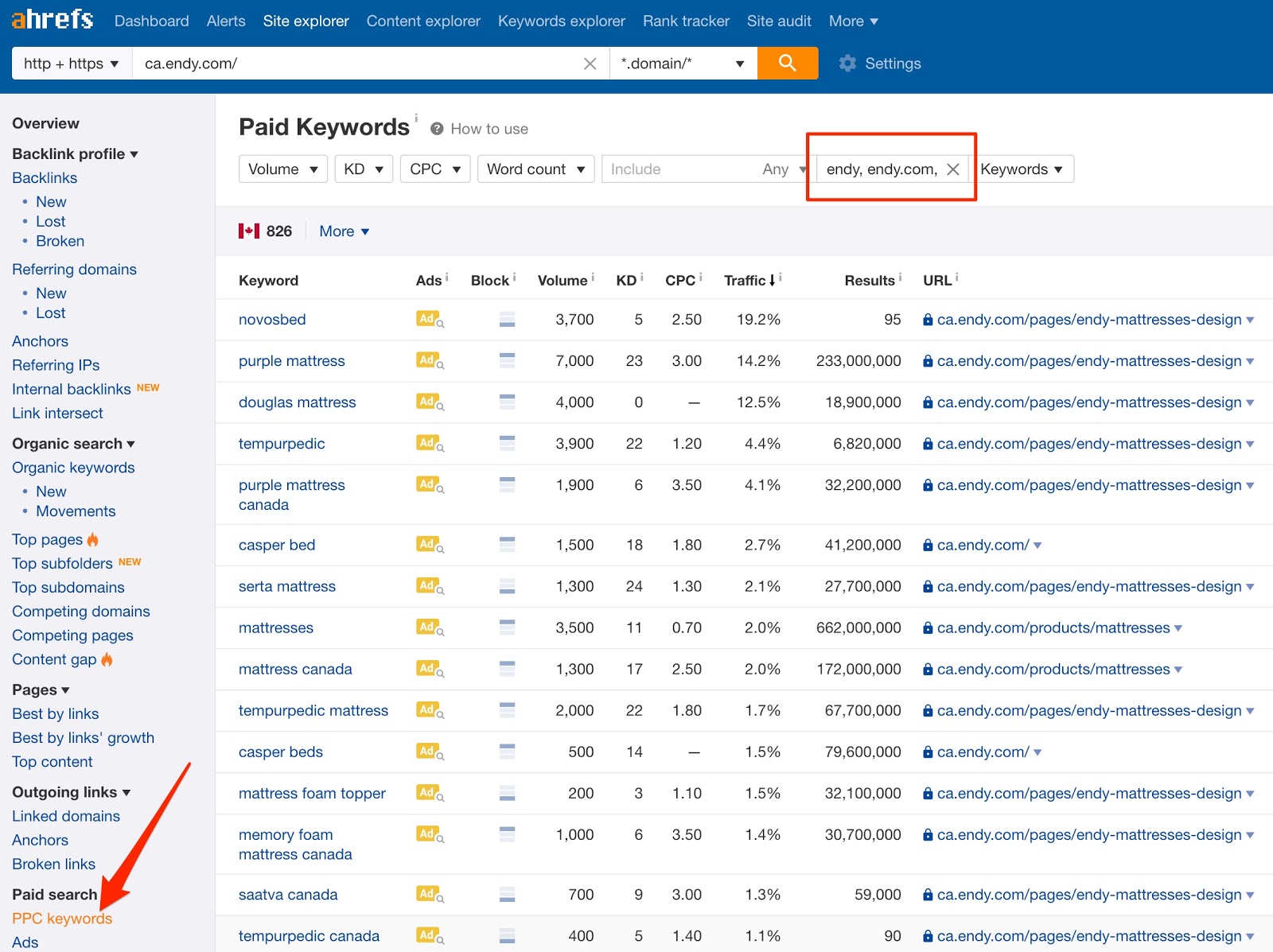
Here, you’ll see the keywords your competitors are bidding on, the landing pages they’re sending traffic to, and the ad copy they’re using.
B. Display retargeting
I recently visited Flat Tummy Tea as part of the research for this post. Soon after, I started seeing their ads:

Welcome to retargeting.
Retargeting is a form of online advertising that allows you to target visitors who have left your website. It can help persuade visitors to revisit your site and consider a purchase.
Here’s how retargeting works:
- You install something called a pixel on your website (this is as easy as copy-pasting a bit of code);
- This tells Google when someone visits your website;
- If they then visit other websites that show Google ads, Google will “retarget” those people by showing your ad to them.
For retargeting to work, you need to understand where your potential customers drop off in your marketing funnel.
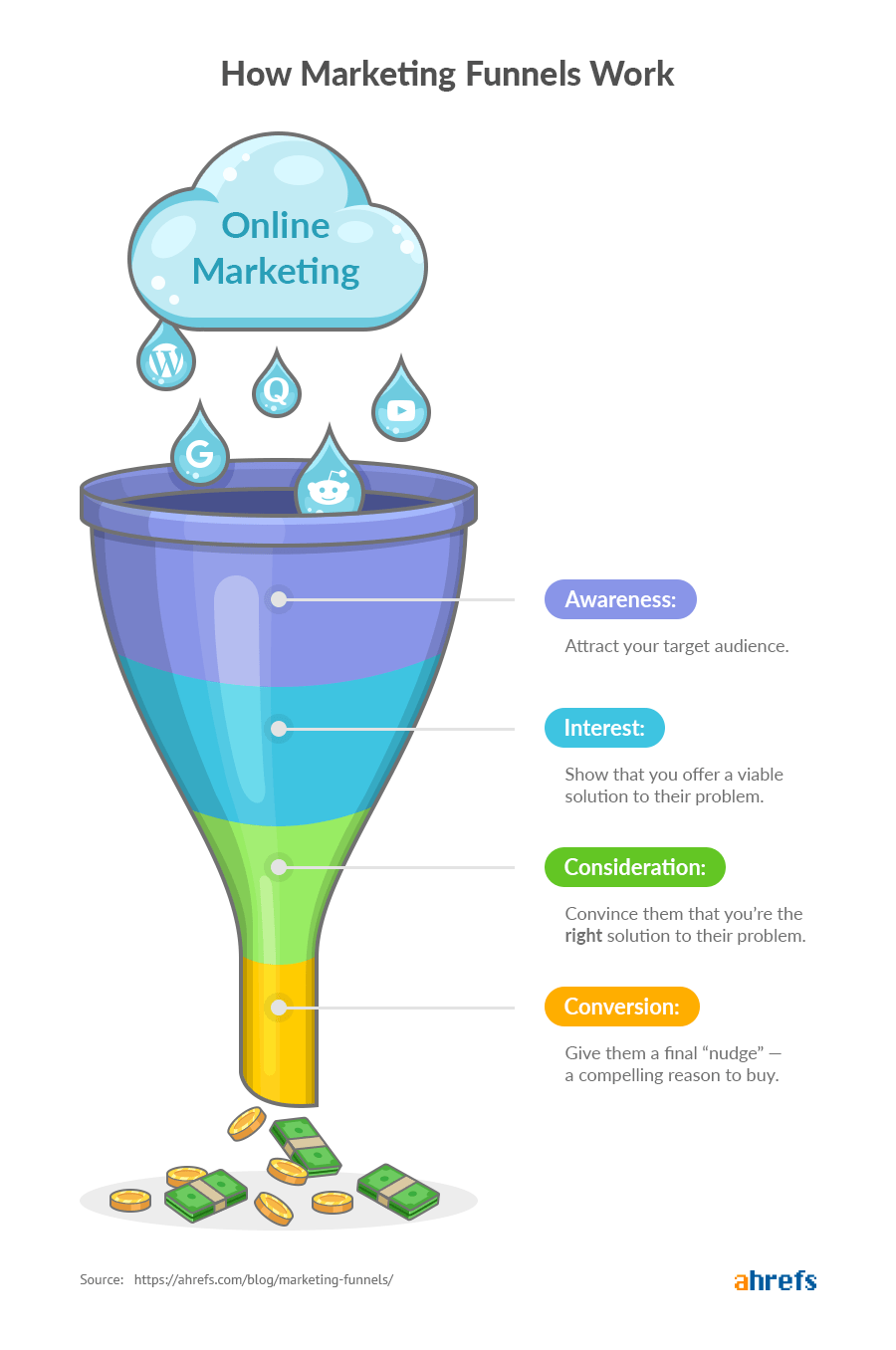
Based on that knowledge, you can retarget them with an offer based on the next stage of your funnel.
For example, they might have visited one of your product pages, added it to the cart, but did not continue to checkout. In that case, besides sending an abandoned cart email, you could also retarget those prospects and encourage them to go back to your site and complete their purchase.
Or if you see a lot of traffic on your homepage, but no one is converting to your email list, you can remarket to them with an incentive to do so.
As you can see, there are plenty of ways you can set up your retargeting campaigns. Here are some resources to help you get started with Google Display Retargeting:
C. Google Shopping Ads
This is a Google Shopping ad:
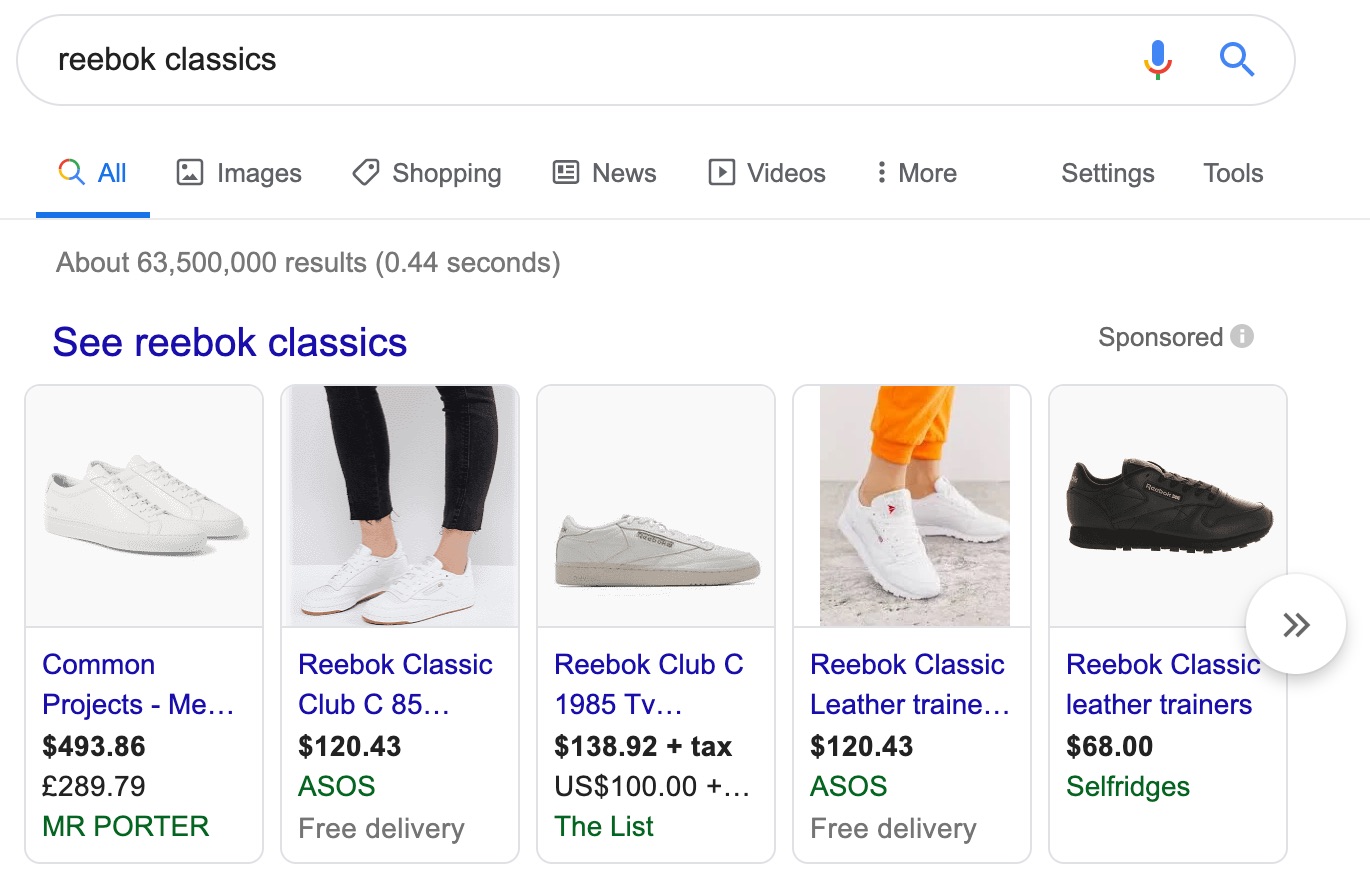
Also known as Product Listing Ads (PLAs), these ads are compelling because they often appear before organic results for commercial keywords, and they allow you to include visuals (which help capture attention).
Read more about how to set them up properly in this step-by-step guide here.
Affiliate marketing is where you pay someone a commission for selling your product. Lots of ecommerce stores have them.
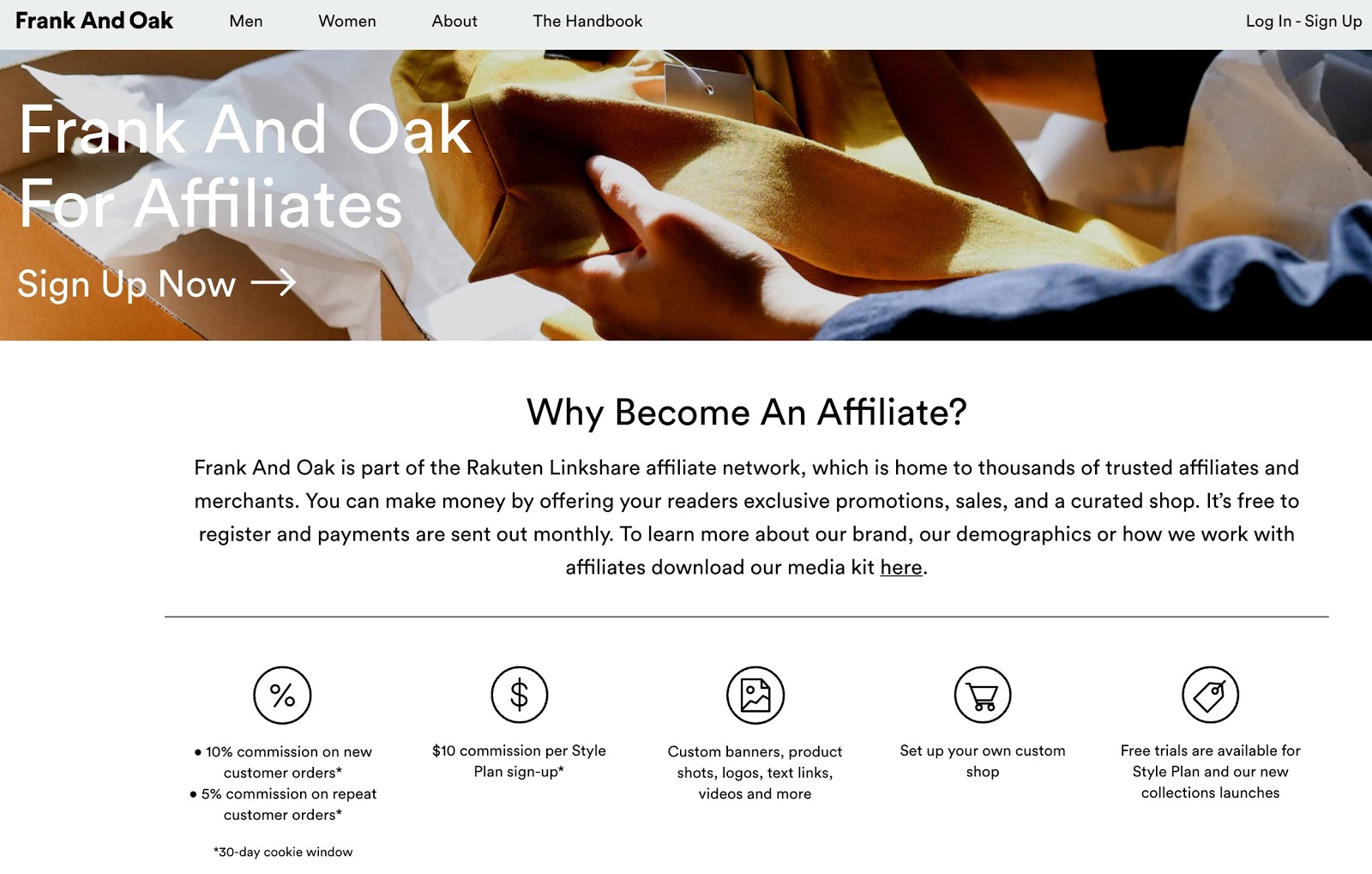
Here’s how it works:
- An affiliate promotes your product;
- A customer clicks their “affiliate” link and purchases one of your products;
- Their purchase gets tracked;
- You pay the affiliate the promised commission (e.g., 10% of the sale price).
Basically, you find people with an existing audience of your target customers, then work with them to promote it to their audience.
As a new ecommerce store, you’ll likely face two issues with this channel:
- Finding affiliates to work with;
- Convincing affiliates to work with you.
Let’s tackle them.
A. Finding affiliates
The easiest way to find affiliates to work with is via Google. Search for “top [your niche] influencers/bloggers”, and you’ll get tons of curated lists:
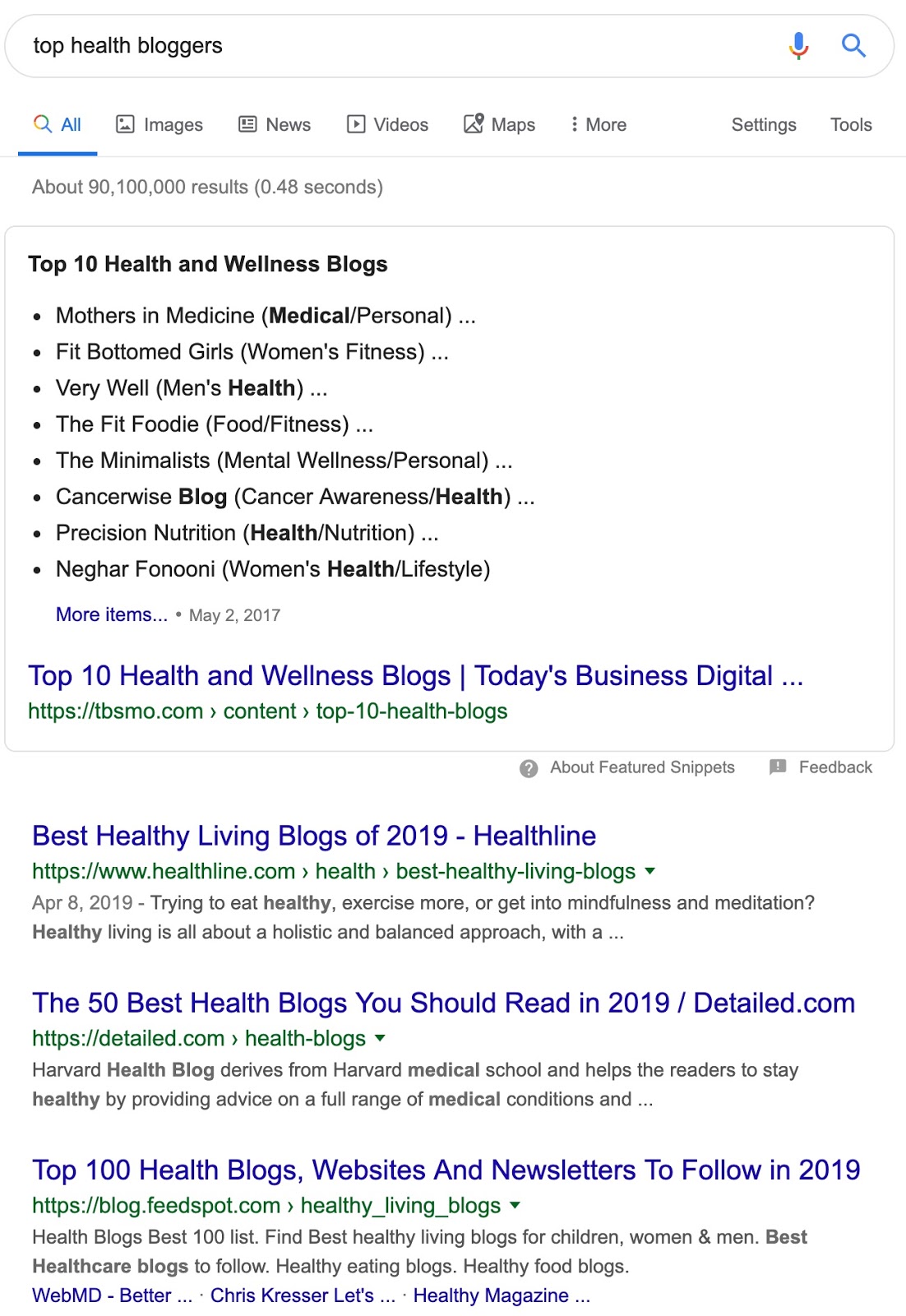
You can also use Site Explorer. Here’s how.
Find a competing website with an existing affiliate program, sign up to get an affiliate link, then look for a footprint in the URL.

Paste the domain into Ahrefs’ Site Explorer, then go to the Backlinks report. Type the pattern into the “Include” box, then choose only “URLs of backlinks” from the dropdown.
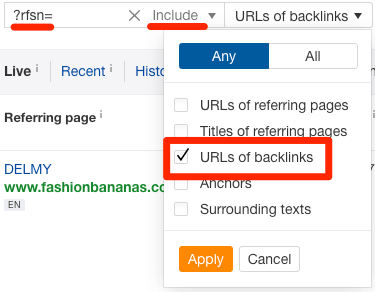
You should now see a list of your competitor’s affiliates.
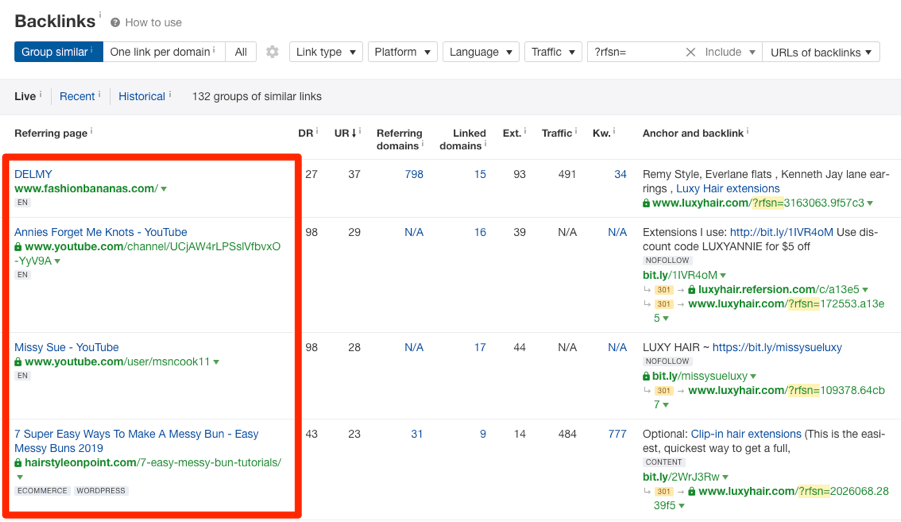
Since they’re working with your competitors, they might be interested in working with you too. Consider reaching out and offering them an irresistible deal.
PRO TIP
Sometimes, you might find it difficult to register for your competitors’ affiliate programs as they have stringent criteria:

In that case, find out how much commission an affiliate can potentially earn per sale. For example, Luxy Hair offers $10 for each product sold.

Enter your competitor’s website into Site Explorer, go to the Backlinks report and paste that number into the “Include” box:

Scroll through the list and you’ll find affiliate links going back to your competitor’s site.

B. Convincing affiliates to work with you
Since you’re an unknown store, the toughest part is persuading affiliates to work with you.
For that to work, you’ll need a compelling offer.
But what does that mean in real terms?
According to Jack Meredith, Director of Marketing at Kettle & Fire, it means:
- Having a high-quality product they can stand for. Most affiliates make a living by building trust with their audience. If they promote shoddy products, they might lose confidence from their fans. As such, they’ll only want to promote products that they believe in.
- Making it as easy as possible for them to promote. Most affiliates that work with ecommerce stores have to do everything themselves: get a landing page set-up, write their own copy, etc. You can stand out by doing some of the heavy-lifting for them. Give them the email copy, help them design a landing page that converts, etc. Yes, it’s a lot of hard work, but you’ll have to grind when you’re starting out.
- Have an irresistible offer (monetary). Affiliates promote a product because they want to make money. So, your offer must make sense for them monetarily. Do the math, and offer something that works out for you both.
At its core, affiliate marketing is relationship building. Understanding your collaborators’ goals is crucial when building a successful affiliate program.
Jack says that once you have success with your first few affiliates, people will start introducing you to more prominent players.
Once the results are coming, and you get your first two or three big ones, people start talking. The affiliate community, at least in the health space, is small. They’ll be like, “Hey, Kettle & Fire is great to work with. You should promote them.” And it starts snowballing to where you get introduced to bigger affiliates. Yea, that sums up how we’ve gotten to where we are.
This can create a flywheel effect for your store.
Work with quality affiliates -> you get more awareness and sales -> you’re able to pay out more commissions -> other high-quality affiliates notice and want to work with you.
What about influencer marketing?
Influencer marketing involves sending products to top social media influencers and hoping that they’ll review or mention your brand. (You can also pay for them to endorse your product to their following.)
Generally, Babak is not a massive fan of this strategy. Firstly, if you’re expecting organic reviews from these influencers, you’ll have to hope that they like your product enough to do so.
Secondly, it is difficult to measure the success rate of such endorsements. It is entirely possible, as Frank Body discovered, to sponsor a top influencer (Jen Selter) for $20,000 and get 0 sales.
It’s often better if you spend the money elsewhere.
What’s the end goal of marketing your online store? More sales, right?
If so, there is no better place than the world’s biggest marketplace: Amazon.
While you’d likely not be able to drive traffic to your store this way, in exchange, you’ll gain access to millions of shoppers who prefer to buy from Amazon.
After all, Amazon accounted for 44% of all ecommerce sales in the U.S in 2017. In fact, it even beats Google in terms of product searches.
And I’ll be honest with you. If you’re not selling your products on Amazon, someone else will. In that case, you should get in the game and control what your customers will see.
Now, this isn’t a blanket recommendation. Whether you should sell on Amazon depends on whether you have a product with existing demand. If you have something that people already want or buy (e.g., baby products, speakers, mattresses), then Amazon is fantastic.
If you’re selling something with unknown demand, then it might not make sense.
Getting your products on Amazon could be an entire article on its own, so I’d recommend that you check out this comprehensive guide.
Of course, getting your product on Amazon doesn’t mean you’ll automatically start generating more sales. The ease of selling there means that thousands, if not, millions of other small businesses are fighting for the same attention as you are. They, too, want a piece of the pie.
To stand out, you’ll have to rank well.
Amazon has a unique ranking algorithm called the A9 algorithm. To rank, you’ll have to optimize your product title, bullets, descriptions, and backend search terms. The keywords you choose to include in these areas will be the key that helps you rank on the first page of search results.
Therefore, it’s important to do keyword research.
To do this, brainstorm a few words or phrases related to your product and enter them into Ahrefs’ Amazon keyword tool. Choose any of the keyword ideas reports, and you will see plenty of keyword ideas alongside search volume data and other metrics.

Incorporate any relevant keywords into your product listings to help increase visibility.
Final Thoughts
Peter Thiel writes in Zero to One:
Poor distribution—not product—is the number one cause of failure. If you can get even a single distribution channel to work, you’ll have a great business. If you try for several but don’t nail one, you’re finished.
All of the above strategies will work. Plenty of ecommerce stores have succeeded with them.
But if you’re starting out, you won’t have enough time, budget, and resources to manage all of these channels at the same time. So, what I’d recommend is doubling down on one channel that works.
To do that, you need to know who you’re trying to sell to, and where to find them. For example, if you’re trying to sell to men who are above 60 years old, should you run Instagram ads? Probably not, since Instagram users are generally younger.
Once you have that information, use the Bullseye Framework, popularized by Justin Mares (founder of Kettle & Fire) and Gabriel Weinberg (founder of DuckDuckGo) to run a series of tests and figure out which is the most profitable channel for you.
Only move on to the rest when you have time, budget, and resources.
Did I miss out on any ecommerce strategies? Let me know in the comments or on Twitter.




